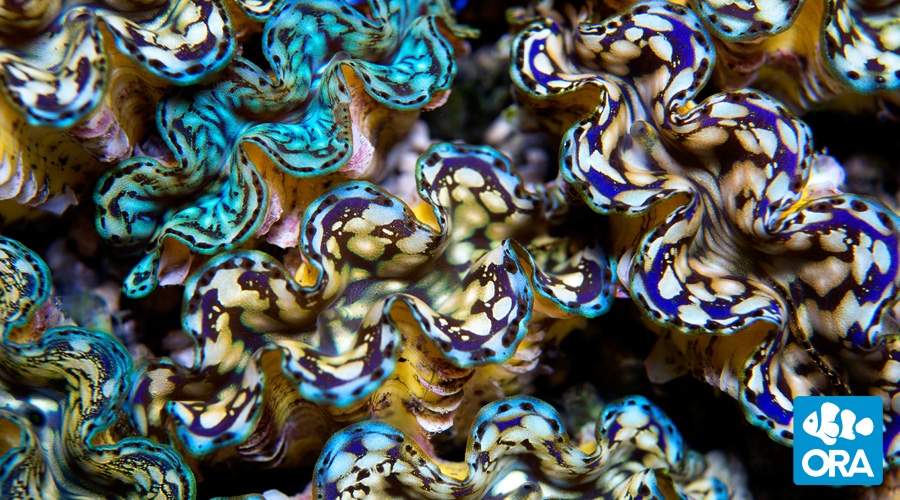Clams are some of the most fascinating members of the coral reef community, and they are especially welcomed in our home aquaria. Today we have access to more varieties of Tridacna than ever, and ORA is piling on one more new clam to the list with their recent release of Maxima clam hybrids.
This fresh batch of unusual maxima clams, Tridcana maxima, come from ORA’s clam breeding operation in the Marshall Islands but they are not the result of intentional hybridization. ORA is not 100% sure that these clams are hybrids, but they sure do share the mantle pattern & color and the shell morphology of both Tridacna maxima and T. squamosa.
The most notable indicator to the unusual genetics of these potential hybrid clams is the peculiar color and pattern of the mantles of these bivalves. The ORA Hybrid maxima clams show the large spot pattern of squamosa, but the margin of the mantles doesn’t have the regular row of eyes on the edge of the mantle that is typical of T. maxima.

Interestingly, some of the unusual maxima clam hybrids pictured by ORA closely resemble the blue Squamosa clams that we’ve seen cultured in Australia. We know that the broodstock for those clams was obtained on the great barrier reef, and we don’t believe that the Darwin farm is creating intentional hybrids, but perhaps they are line breeding a naturally occurring hybrid of Tridacna maxima and T. squamosa.
ORA’s clam farm has succeeded in intentionally crossing squamosa and maxima clams with viable offspring resulting from the cross of maxima eggs and squamosa sperm, but not the other way around. Regardless of their pedigree, the ORA hybrid maxima clams have stupendous mantles which promise to grow into truly spectacular giant clams.




